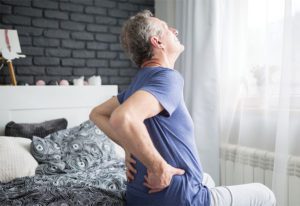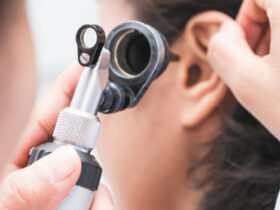By Luga Podesta, M.D., Director of Regenerative Sports Medicine – Bluetail Medical Group-Naples
 Low back pain is the most common medical disorder and the costliest of all medical diagnoses in industrialized societies. Back pain is second only to the common cold as the most common reason for seeing a physician. 70 to 80% of the world’s population will experience low back pain sometime during their lives.
Low back pain is the most common medical disorder and the costliest of all medical diagnoses in industrialized societies. Back pain is second only to the common cold as the most common reason for seeing a physician. 70 to 80% of the world’s population will experience low back pain sometime during their lives.
Low back pain occurs in fifty-seven percent of women and fifty-one percent in men and increases with age to the age of 60 years-old. The first attack of LBP usually occurs in our thirties with ninety percent of complaints resolving without medical treatment in six to twelve weeks. However, when low back pain occurs with sciatica, or leg pain, seventy-five percent of which becomes asymptomatic within six months, with a sixty percent recurrence rate over the next two years.
There are a number of areas in the lumbar spine that can generate pain including the supporting muscles and ligaments, intervertebral discs, nerves, boney structures, joints, infection as well as referred pain from other areas of the body.
Sprains and Strains
The most causes of low back pain include lifting, standing, bending, twisting, carrying heavy objects, or sitting for long periods of time. Back pain can also be caused by strenuous exercise. Pain in the lumbar spine can also be exacerbated by tension and stress. Disc herniations on the other hand, can be caused by violent sneezing and coughing which increases pressure around the discs, causing them to herniate. Low back pain can also occur when the muscles, joints, bones and supporting connective tissues of the back become inflamed as the result of any rheumatologic disorders or infections. Arthritic conditions can also predispose patients to back pain. Back pain accompanied by loss of bladder and bowel control, difficulty in moving your legs, as well as numbness and tingling in your arms and legs are indicative of significant spine injuries. They require immediate medical treatment.
Low back pain most commonly is caused by an injury to the supporting muscles, or ligaments in the lumbar spine which function to hold the vertebrae in proper position. The lumbar vertebrae are bones that make up the spinal column to which the spinal cord passes. These soft tissues (muscles and ligaments) can fatigue, weaken, and partially and or completely tear with repetitive flexion and extension of the spine, especially, when twisting motions are added. When the spine loses that stability, it can result in pain. Pain due to muscle strain, or ligament injury (sprain), most commonly is referred locally throughout the muscles affected and into the buttocks and possibly into the back of the thigh. Usually, this pain does not pass beyond the knee. Tingling and numbness in the leg may indicate a herniated disc or a pinched nerve, but usually is not present when muscle or ligament injury occurs. If weakness, numbness, tingling or radiating pain past the knee develops, consult your doctor immediately.
When low back pain is associated with changes in bowel and or bladder function, sexual functioning; night pain awakening you from sleep, unexplained weight loss, failure of bed rest to relieve pain or when associated with a febrile illness medical attention should be sought immediately.
Lumbar Disc Herniations
Younger individuals in their mid 30’s is at greatest risk for intervertebral disc herniations.
The intervertebral discs are small, circular cushions between the vertebral bones. The discs function as shock absorbers and cushions. Lumbar discs are made up of a gelatinous inner center or nucleus surrounded by a thick casing or annulus. The discs help to separate two vertebral bones while maintaining the spacing for the exiting spinal nerves.
Discs are damaged when the outer casing or annulus allows the inner nucleus to escape thought the outer layer. The disc can be damaged by a sudden strenuous action such as lifting a heavy object or twisting. The discs can also be damaged by a fall or accident, repeated straining of your back or most commonly by simply bending over and twisting. Golfers, does this sound familiar?
The pain associated with disc herniations can range from localized pain in the low pack to pain radiating into the buttocks or legs. Lumbar disc herniations that are compressing or irritating a nerve root can cause an electric type pain down the legs, numbness and tingling in the legs or in more severe cases, weakness in the leg muscles and bowel and bladder abnormalities.
Disc herniations can be diagnosed after a thorough history, physical examination and imaging studies such as an MRI scan have been completed.
The treatment for lumbar disc herniations will depend on the severity of the herniation itself and the associated symptoms created by the herniation.
Prevention and Treatment
Unfortunately, it is not possible to describe specific treatments for all the numerous causes of LBP. However, when back pain occurs, stop the activity that is or might have caused the pain. It is extremely important to remain relatively active. Studies have shown that prolonged rest can be detrimental, resulting in muscle deconditioning and weakness.
The vast majority of disc herniations and low back pain can be affectively treated non-surgically. Conservative treatment may include relative rest, application of ice packs, physical therapy, core-strengthening exercises, oral medications such as anti-inflammatory medication, pain medication, muscle relaxants, and spinal injections including epidural steroids, facet blocks, ablations and regenerative cell-based therapies including PRP and Stem Cells. If conservative treatment fails, then surgical treatment may become necessary.
The key to treating low back injuries is to prevent them from occurring in the first place. Learning proper lifting techniques is extremely important to help prevent low back injuries.
Maintaining a lumbar flexibility and strengthening program can also significantly help prevent low back injuries by conditioning our core (trunk and lumbo-pelvic) musculature. These exercises can be completed in the privacy of our homes or in hotel rooms. A fully equipped gym or health club is not necessary. A number of these core strengthening exercises can be performed on an exercise ball that can be carried with you while traveling.
Unfortunately, we all will experience low back pain at some time in our lives. With proper prevention and treatment these debilitating injuries can often be avoided or minimized.
239-631-1960
BluetailMedicalGroup.com










